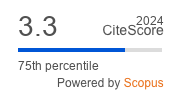Competing Institutional Logics and Paradoxical Universalism: School-to-Work Transitions of Disabled Youth in Switzerland and the United States
| Views: | 3424 | | | Downloads: | 1951 |
Disablement is a complex social phenomenon in contemporary societies, reflected in disability policies oriented towards contrasting paradigms. Fraught with ambivalence, disability raises dilemmas of classification and targeted supports. Paradoxical universalism emphasizes that to achieve universality requires recognizing individual dis/abilities and particular contextual conditions and barriers that disable. Myriad aspects of educational and disability policies challenge both conceptualization and realization of universal policies, such as compulsory schooling, with widespread exclusion or segregation prevalent. Resulting tensions between providing support and ubiquitous stigmatization and separation are endemic, and particularly evident during life course transitions that imply shifting memberships in institutions and organizations. Particularly visible among disabled youth, school-to-work transitions are fundamentally challenged by contrasting policies, institutional logics, and institutionalized organizations. Analyzing institutional logics facilitates understanding of the lack of coordination that hinders successful transitions. Examining such challenges in the United States and Switzerland, we compare their labor markets and federal governance structures and contrasting education, welfare, and employment systems. Whereas lacking inter-institutional coordination negatively impacts disabled young adults in the United States, Switzerland’s robust vocational education and training system, while not a panacea, does provide more coordinated support during school-to-work transitions. These two countries provide relevant cases to examine ambivalence and contestation around the human right to inclusive education as well as the universality of the right (not) to work.
© Christoph Tschanz, Justin J. W. Powell. This is an open access article distributed under the terms of the Creative Commons Attribution 4.0 license (http://creativecommons.org/licenses/by/4.0), which permits any use, distribution, and reproduction of the work without further permission provided the original author(s) and source are credited.


